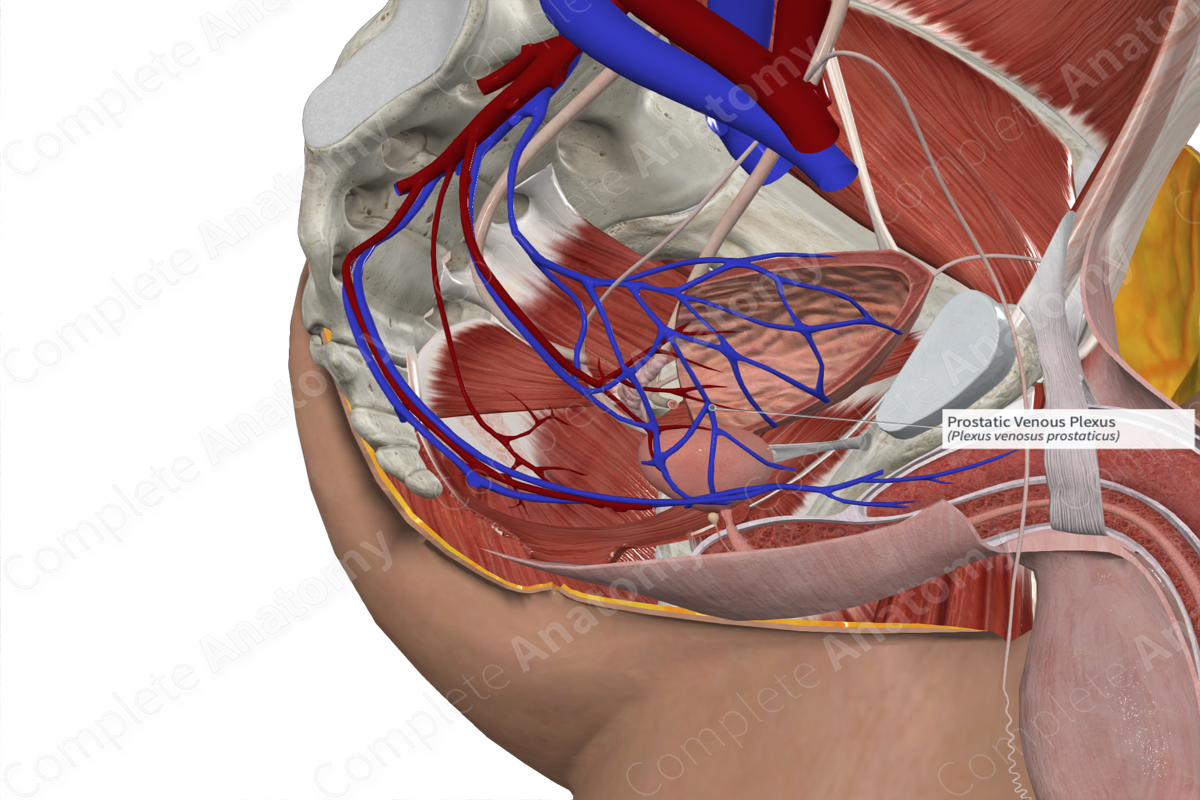
Quick Facts
Origin: Forms a plexus of highly connected venules just inferior to the prostate gland.
Course: Drains into internal iliac vein.
Tributaries: Deep dorsal veins of penis.
Drainage: Prostate glands, corpus spongiosum, glans and posterior shaft of penis, and neighboring bladder and proximal urethra.
Origin
The prostatic venous plexus is formed by veins of the intermediate parts of the penis, the prostate, and the bladder via the vesical plexus.
Course
The prostatic venous plexus forms a highly anastomotic circle of venules at the base of the prostate gland. Here it encircles the urethra and the prostate gland.
Tributaries
The prostatic venous plexus drains to the internal iliac vein the vesical plexus.
Structures Drained
The prostatic venous plexus specifically drains what are considered “intermediate” venous system structures of the penis including the glans, corpus spongiosum and the distal two thirds of the shaft. It also receives venous blood from the prostate gland itself, overlying the bladder, and proximal urethra, where it emerges from the bladder and passes through the prostate gland.
List of Clinical Correlates
- Communication of the prostatic plexus with the vertebral venous plexus posteriorly is thought to be the route of metastasis of prostate cancer to the bone.
Learn more about this topic from other Elsevier products





